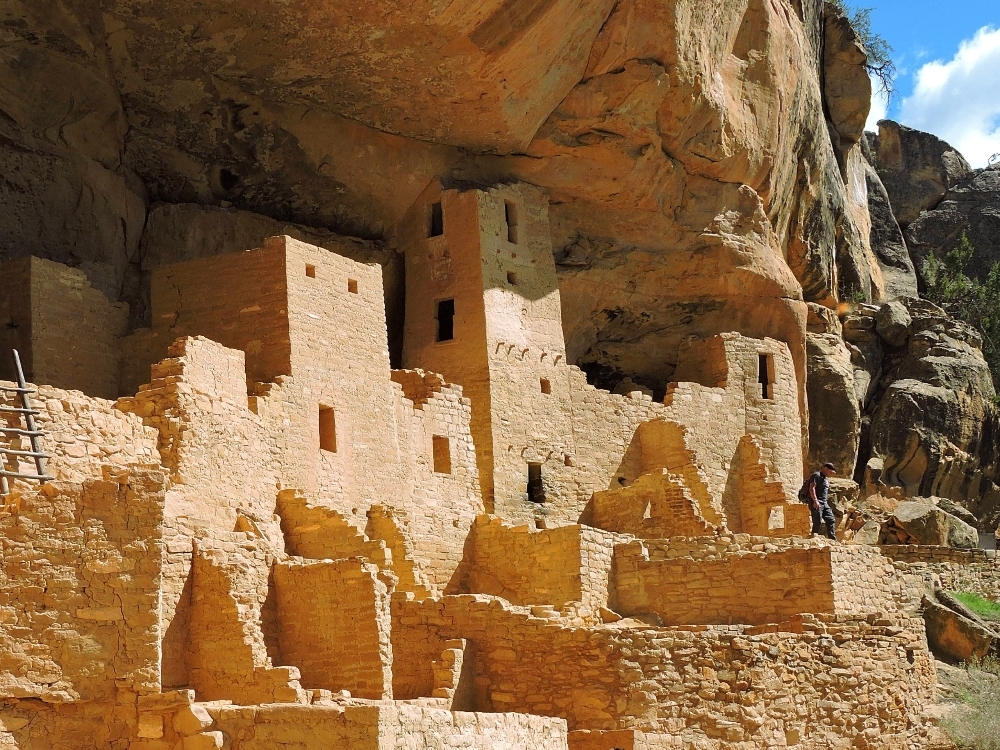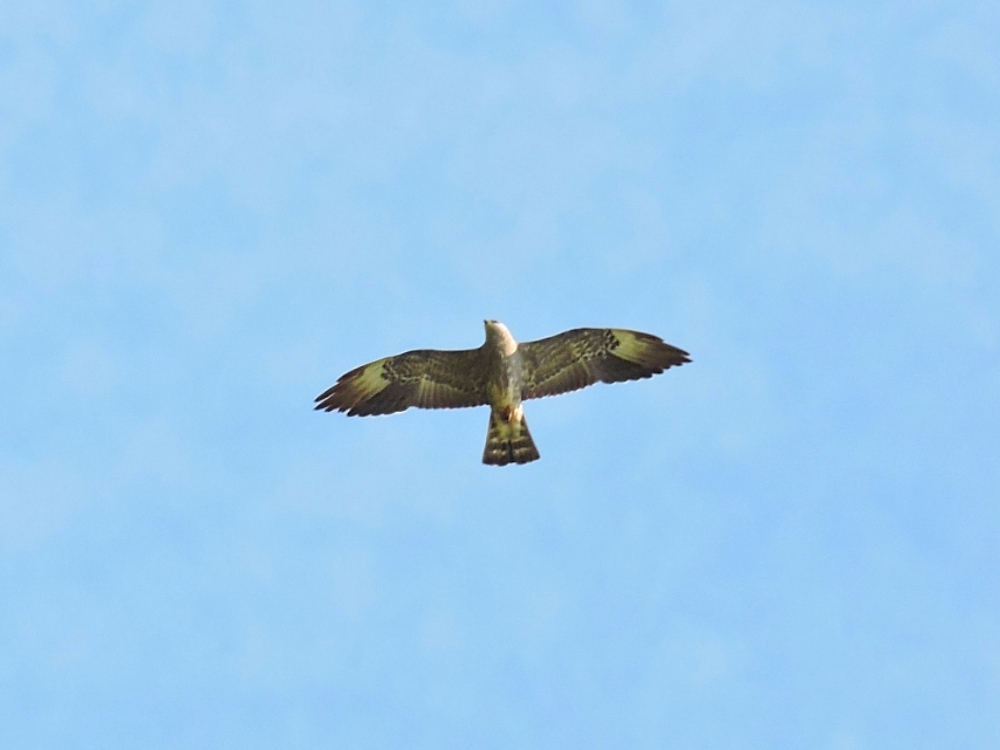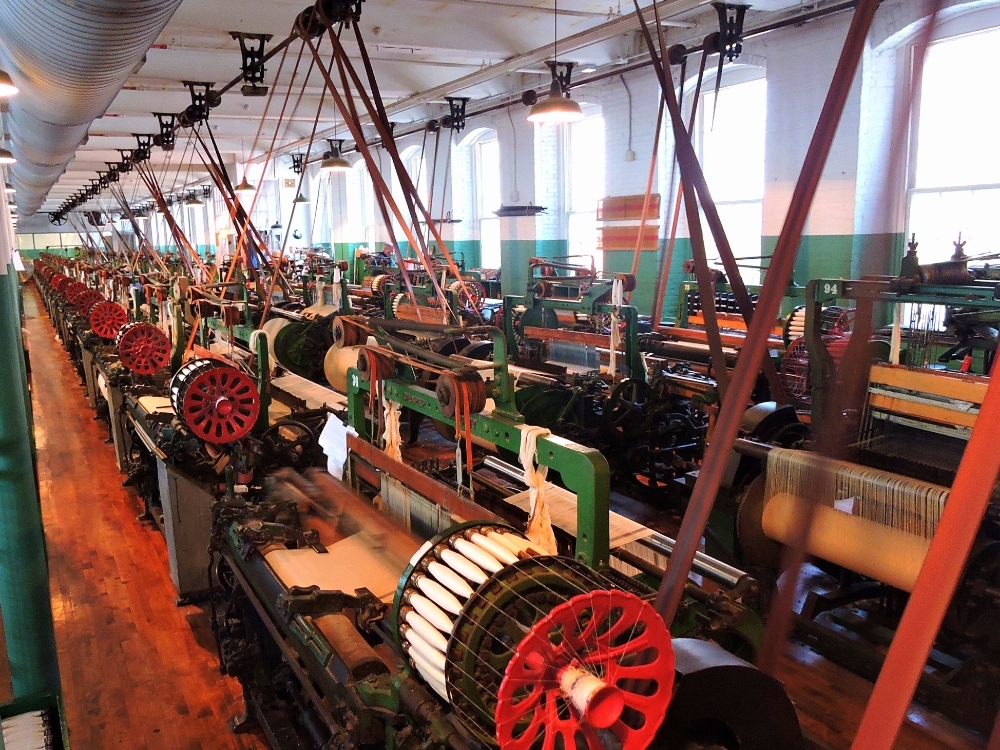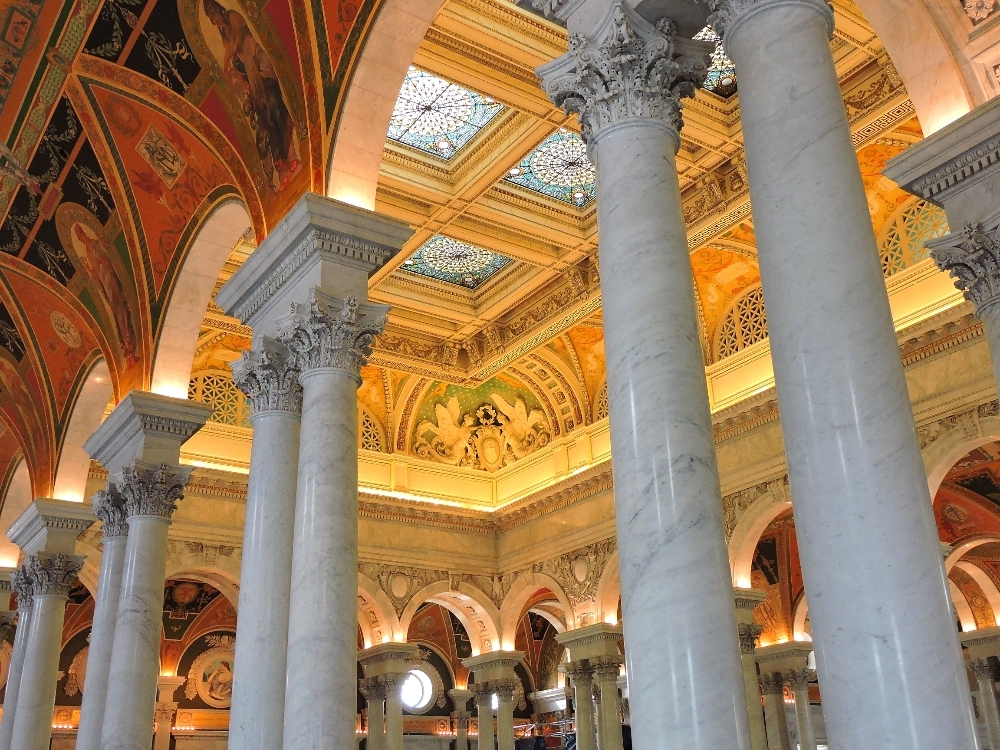The World2 Tour has now moved beyond the mainland of my home continent of North America, and, as is the case with most very long tours, the end of one continent usually involves some form of transfer across a body of water, sometimes small in scale, but other times very large, in order to begin again on a new one. In my case, this first change of continents turned out to be somewhat disjointed, taking a little longer than it could have, costing me more money than it should have, and involving less cycling than I would have liked. I will come back to the reason for that in a moment, but a change of continents also provides some time to reflect of the experiences that the land just crossed has provided, and so I will begin with that in mind.
The count of World Heritage Sites I saw during this first section was a satisfying nineteen, one more than I thought would be probable, thanks to the addition of a site I considered optional,
Miguasha, in Quebec. In other words, I successfully saw all the sites that were within a realistic distance of my intended route, which was a satisfying success. A few of those were slightly underwhelming, but even those were informative and interesting in their own ways. On the other hand, some were truly impressive, with my favorites being Mesa Verde, Chaco Canyon, Surtsey, and Ilulissat. Of those, the rarity of being able to make a visit to Surtsey perhaps makes my trip to that site one of my more gratifying travel accomplishments to date. In the weeks ahead, more sites will be visited, however, the rate at which I will reach them will continue to be fairly slow, since I will still be in a part of the World where the density of sites is rather low. For now, here is another image from the first WHS of the Tour, Mesa Verde.

In my quest to see a great number of bird species that I have never before seen, my results so far were good, but not quite as strong as I would have liked. This, of course, was not very surprising, given that a large fraction of this section of the Tour involved bioregions that are not particularly different from those in which I have spent the majority of my life. My species count for North America, including Iceland (which I still suggest should be considered half in America) and Greenland, was seventy-five. I had hoped for an even one hundred, which seemed theoretically possible. However, I usually overestimate the number of species realistically possible to be seen during a short visit to a given area, based on records of sightings by other birders, so my count could be seen as acceptable. Nevertheless, there were a handful of species that I wanted to see, which now may forever remain on my unseen list, including Yellow-Billed Magpie, Upland Sandpiper, Dickcissel, and any type of Ptarmigan. The latter genus may now qualify as Nemesis Birds for me since I have missed them on at least three occasions when I have been in their Arctic home range. However, one species that I thought would also permanently stay on that list came through at the last minute, when I split up a rail trip south from Washington, D.C. with an overnight break in Savannah, Georgia, namely, Mississippi Kite, making that the final bird of North America. The destinations upcoming over the next few months have the potential to bring a much higher species count, not to mention the return of beautiful polychromatic plumages, which have been notably lacking in recent weeks. I hope I will be able to take advantage of those circumstances.

Of course, it is cycling that is the main focus of the Tour, and while I successfully traversed the entirety of my intended route, according to my desired schedule, this section of the Tour may not have been as enjoyable as it could have been. That was primarily because of the weather, and I could have titled this post, The Year Without a Summer,
though I suppose the absence of Spring would have been more precise, since that season in eastern North America, 2019, was one of the wettest and coldest in recent memory. This drove me indoors during many more nights than I had planned, placing a big strain on my budget, and prematurely wore out some of the bearings in my rear hub, a leading to a repair that was unusually tough to correctly complete. Somewhat paradoxically, the parts of this section that had the best weather were Colorado, where the high altitudes in April had previously caused me concern, and Greenland, which I expected to be chilly because, well, it’s Greenland. As it turned out, just a few days after I left that huge island, news reports came out announcing that a significant heat wave was occurring there, exacerbating the seriously severe melting season that I had already witnessed.
This section of the Tour was also more costly than normal thanks to my propensity for skipping around as I crossed the continent, leading to more rail tickets, and more indoor nights, but that was the an expected result of my desire to only tour through places that were new to me, or contained specific places that distinctly interested me. Some readers may feel that such a approach is less ideal than a more complete crossing of a continent in the context of a Grand Tour of the World. However, by the time I reached Halifax, the slightly over six thousand kilometers of cycling done up to that point was essentially equivalent to the coast-to-coast portion of my first transcontinental tour of North America, twenty-six years earlier. Add in the distance from Iceland and Greenland, and the total of around seven thousand two hundred kilometers was longer than that tour in its entirety. So I feel that this route adequately provided an enriching experience of the continent in general. More specifically, it gave me a pleasing reminder of just how beautiful the unaltered natural areas of this massive land really are, especially in the springtime. As for the modern
human-built zones, well, not so much.
The reason that my route took a sharp curve in a new direction after this section had more to do with the calendar than any other factor. It would have been more practical, and equally interesting, to continue eastward when I had completed my tour of Iceland. However, by that time the northern autumn was lurking just around the corner, with winter not far behind. As such, I really didn’t relish the idea of still being in the northern latitudes during November and December, much more so, given the fact that April, May, June, and July often seemed like winter for me this year. Since the southeastern section of America in August also didn’t thrill me as a touring destination, and because I have been in that region many times before, I chose to skip beyond, further south, to some areas that would provide more variety. In doing so, I was very much looking forward to stashing my warm gloves, jacket, and long-sleeved shirt down in the bottom of my panniers and forgetting about them for a while. Even though I happily did that, in continuing south at this time of year, it seems, as often happens, that I may have overcompensated.
Returning from Iceland at Boston, I visited that area for a few days, which I have mentioned already, with just a little cycling. It was pleasant to spend some time in New England again, one of my favorite regions of the USA, but I didn’t feel I could commit the time and cash needed to see all the places there that I might have liked. I did enjoy finally seeing some authentic Shaker buildings at the Harvard Shaker Historic District, near Ayer, and the Lowell National Historical Park, especially the clamorous machinery in the Park’s Boott Cotton Mill Museum.

From there, I really didn’t want to make the rail journey down the east coast in one trip, without seeing anything along the way, so I included three stops. The first was in Washington, D. C., just thirty kilometers from where I grew up. I had only been back to that area once in the prior twenty-five years, so it was nice to make a visit during the Tour. While I had seen most of the important monuments and museums several times when I was young, I really wanted to go back again to see some of them once more, with an adult perspective, in addition to a few new additions that weren’t there until recently. The highlight for me this time was the amazing Library of Congress. I had been there once or twice before, but had not previously noticed its amazing Beaux-Arts interior, which had my jaw agape this time around. Overall, my visit was great, but also disturbing. By that I mean it was annoying to me to think that in earlier centuries we were capable of building so many beautiful libraries and civic buildings, not to mention classic homes, schools, and other structures, but it often seems that today the best we can come up with are crappy big-box stores and similar dreary edifices.

After taking a quick look at the house I grew up in, nearby in Virginia, which, thankfully, seems to have been reasonably well cared for, I made another brief stop in the center of that State. That would let me do a much-needed full day of cycling, from Charlottesville to Richmond, connecting stops on the Crescent and Silver Meteor Amtrak routes. It was a very steamy ride, and a little tiring after a number of days off of the bike, but along the way I saw the high school my father attended, and graduated from in 1949, which was quite fun. After that, was the stop in Savannah, where I saw the Kite, and enjoyed seeing that city for the first time, and then came the end of this section in Fort Lauderdale. That end point was chosen because it is the port for a ferry to the Bahamas, and that reveals that the next section begins with a significant amount of Island Hopping, which means another period with somewhat limited cycling distances, but also a handful of World Heritage Sites, and plenty of Birds.
Readers may be wondering about the title of this post, which actually has a musical origin. When I was planning the Tour of Gondwana, I chose the song What a Wonderful World to be the theme song for that journey. Actually, I made that choice five years earlier, when the original route for that Tour would have included Stages on six continents. Regardless, for the World2 Tour, I had no intention of doing a similar thing. However, a couple of weeks prior to the start of the Tour, during a rare moment of brief relaxation between packing and home-disposal tasks, I stumbled upon this great version of a classic folk song, by a band from, of all places, Norway. Immediately, I knew that it would be the theme for the new Tour, since it matches my mood and state of mind perfectly this time.
Farewell, North America, I am not sure when I will see you again.